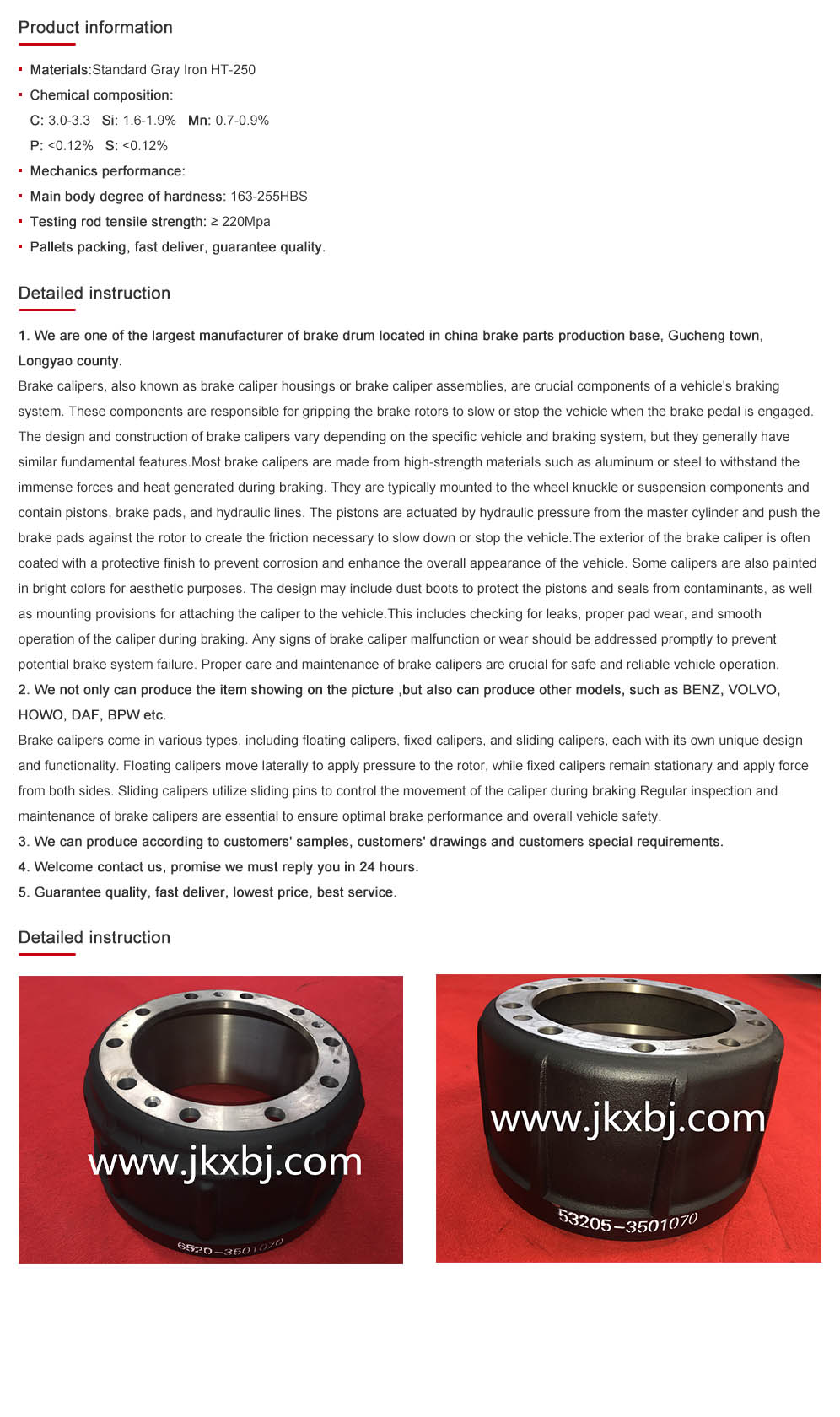Aug . 30, 2024 15:09 Back to list
When to Change Brake Drums | Essential Guide for Vehicle Safety
When to Change Brake Drums A Comprehensive Guide
Brake drums are a crucial component of a vehicle's braking system, especially in drum brake setups. Unlike disc brakes, which are more common in modern cars, drum brakes are often found in older models, rear wheels of some vehicles, and heavier-duty trucks. Understanding when to change brake drums is vital for maintaining your vehicle's safety and performance. Here, we will outline the signs that indicate it's time to replace your brake drums, their general lifespan, and the inspection process you should follow.
Signs of Worn Brake Drums
1. Unusual Noises One of the most common signs that brake drums may need changing is the presence of grinding, squeaking, or squealing noises when you apply the brakes. These sounds are typically caused by worn brake shoes or damaged drums.
2. Vibrations If you feel pulsations or vibrations in the brake pedal while braking, this could signify that the brake drums are warped or out of round. This issue can lead to uneven braking performance.
3. Decreased Brake Performance A noticeable decrease in braking efficiency can be a strong indicator of worn brake drums. If you find that your vehicle takes longer to stop, it is essential to have your entire braking system inspected.
4. Visual Inspection Regular visual checks can help identify brake drum issues. Look for deep grooves, cracks, or other signs of significant wear. If the surface appears uneven or very worn, it’s time for a replacement.
5. Brake Dust Accumulation Excessive brake dust buildup around the drum and wheels can indicate that your brake components are not functioning correctly. This accumulation may also affect braking performance.
when to change brake drums

General Lifespan of Brake Drums
On average, brake drums can last anywhere from 30,000 to 70,000 miles, depending on driving habits and vehicle usage. For instance, frequent heavy towing, aggressive driving, or hilly terrain can accelerate wear. Regular maintenance and inspections can extend the life of your brake drums and overall braking system.
Inspection Process
To inspect your brake drums
1. Visual Check Inspect the exterior for any visible damage, rust, or excessive wear. 2. Feel Test Use your hand to feel for any hot spots on the drum surface; this could indicate uneven wear. 3. Thickness Measurement Using a micrometer, measure the thickness of the drum. If it’s below manufacturer specifications, it should be replaced. 4. Check Brake Shoes Ensure that the brake shoes are in good condition, as worn shoes can expedite drum wear.
Conclusion
Regularly checking your brake drums is crucial for safe driving. If you notice any warning signs, it’s advisable to consult a professional mechanic. By staying proactive about your vehicle's maintenance, you can ensure a safe driving experience and avoid costly repairs down the road. Ensure to keep track of your brake performance, and don’t hesitate to get an inspection if you have doubts about your braking system. Remember, maintaining your brakes is not just about performance; it’s about safety.
-
ROR Web Development: Build Fast, Scalable, Secure Apps
NewsAug.17,2025
-
Scania Brake Drums: OEM Quality for Optimal Safety & Durability
NewsAug.16,2025
-
R.V.I: Advanced Remote Visual Inspection for Precision
NewsAug.15,2025
-
Discover HYUNDA: Innovative Vehicles, Equipment & Solutions
NewsAug.14,2025
-
R.V.I: Unlock Advanced Insights & Real-time Performance
NewsAug.13,2025
-
Kamaz Brake Drum: Durable & Reliable for Heavy Duty Trucks
NewsAug.12,2025
